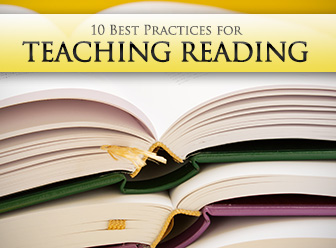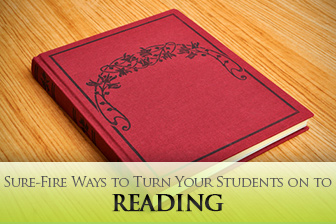How to Teach Reading Skills: 10 Best Practices


The goal is to get the students back on track and into the regular classroom. To do that, it would seem to take a specially designed program targeting individual student needs and interests. However, when I arrived, I found students already experiencing reading failure attempting to read William Golding’s “Lord of the Flies,” a mid-twentieth century novel on the nature of war, as school boys stranded on a island during WWII await rescue. They gradually form the same kind of separate cultures and war structures that their parents had and which had landed the boys on the island in the first place. This is powerful material and is on the list of recommended books for high school reading. However, it was not ideal for these specific students: it was in British English, not American, and therefore somewhat “foreign” to them from the start, due to the vocabulary and grammatical differences of the two dialects; it is also in academic language and filled with unfamiliar language and symbolism. Finally its themes, while universal, were still at an abstract level the students could not relate to. So the book had a number of problems that made it a poor choice for the class in that it did not interest students, and therefore they did not read it nor develop their reading skills.

I was recently talking to my daughter’s karate instructor, a very bright young man and excellent teacher who is not, however, educated beyond the high school level. However, he told me that he wanted to start reading more than he did, which wasn’t much as he didn’t enjoy it. But he wanted to read some “good books,” and because my daughter had told him I had published a novel, he asked about that. I explained to him I wasn’t sure that it would be of interest to him as it was a story of romantic suspense, involving heroines in peril and the heroes who save them, and so forth—a genre for a largely female audience. He appeared somewhat dubious but insisted that he wanted to buy the novel on Amazon. This is a common concern with developmental readers—they believe that there are “shoulds” in reading, that it is to be taken like medicine and not enjoyed, and as if reading something within their own range of interests is “cheating” or wrong somehow. If the student’s main interest is karate or some other sport, that is a good starting place as there are many fine novels and other reading material written on that topic. It is likely then the reader will identify with the topics and/or characters and will have the vocabulary base to understand the material.
Once students are comfortable reading within their own interests, it’s time for instructors to expand those interests. You might suggest to your student, “Because you enjoy reading material about sports, you might like Bernard Malamud’s ‘The Natural,’” which is a classic novel about baseball set in the early 20th century, but which also draws in a lot of American culture at that time, literary symbolism of heroism, as well as the history of baseball. From this reading, students might develop an interest in the history of baseball, for example, or other books by Malamud. The instructor can then refer students to the library or online or traditional bookstores.
Connected to going with student interests is going with their own level, all part of banishing the “should” phenomenon. I’ve seen really novice readers struggle in private tutoring sessions with reading the King James version of the Bible, which they brought in to work with (not in a public school context where this would be inappropriate) because they thought this was a reading “should.” The Bible is difficult material for an accomplished reader as it’s written in Elizabethan English and is set in a context and society far removed from our own. In addition, even experienced readers of the Bible typically study only a page or two at a time. One young man I remember in particular whom I was tutoring through a private literacy program would grimace and complain over the text, “Mrs. Levy, I just can’t deal with this.” He was bright, could decode written English, but had poor comprehension skills. I finally said, “William, you don’t have to deal with it yet remain a religious person. But there are millions of other print materials in English.” It was as if a light came on for him, and I realized he may have come from a home where the Bible might indeed have been the only book available. We spent the rest of the session searching the stacks and came away with several books at his level.
An alternative for students who really feel they “should” be reading something spiritual or religious is to suggest stories excerpted from the Bible and written in contemporary English. There are also editions of the Bible “translated” into contemporary American English.
As with writing, reading can be a lonely pursuit, and students are often used to working in groups, and indeed learning itself has traditionally been a group process. So understandably students might balk at the notion of spending long periods of time alone with a text, not sure if they are even understanding it. As might be predicted, their attention starts to wander, and the text is forgotten. To counteract this problem, the teacher can take a number of steps such as allowing students to read a portion of the text and then asking questions; reading aloud while the students follow along (particularly powerful for nonnative speakers as they can hear how the text should sound), or setting up the students in groups with comprehension and discussion questions.
With some guidance from the teacher in selecting reading appropriate to student interest and level and making the process interactive, students, too, can discover the joy of reading.
What are your methods for getting students excited about reading?